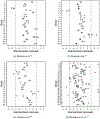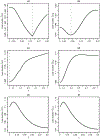A penalization approach to random-effects meta-analysis
- PMID: 34796539
- PMCID: PMC8792303
- DOI: 10.1002/sim.9261
A penalization approach to random-effects meta-analysis
Abstract
Systematic reviews and meta-analyses are principal tools to synthesize evidence from multiple independent sources in many research fields. The assessment of heterogeneity among collected studies is a critical step when performing a meta-analysis, given its influence on model selection and conclusions about treatment effects. A common-effect (CE) model is conventionally used when the studies are deemed homogeneous, while a random-effects (RE) model is used for heterogeneous studies. However, both models have limitations. For example, the CE model produces excessively conservative confidence intervals with low coverage probabilities when the collected studies have heterogeneous treatment effects. The RE model, on the other hand, assigns higher weights to small studies compared to the CE model. In the presence of small-study effects or publication bias, the over-weighted small studies from a RE model can lead to substantially biased overall treatment effect estimates. In addition, outlying studies may exaggerate between-study heterogeneity. This article introduces penalization methods as a compromise between the CE and RE models. The proposed methods are motivated by the penalized likelihood approach, which is widely used in the current literature to control model complexity and reduce variances of parameter estimates. We compare the existing and proposed methods with simulated data and several case studies to illustrate the benefits of the penalization methods.
Keywords: common-effect model; heterogeneity; meta-analysis; penalized likelihood; random-effects model.
© 2021 John Wiley & Sons Ltd.
Figures





References
-
- Gurevitch J, Koricheva J, Nakagawa S, Stewart G Meta-analysis and the science of research synthesis. Nature. 2018;555(7695):175–182. - PubMed
-
- Higgins JPT, Thomas J, Chandler J, et al. Cochrane Handbook for Systematic Reviews of Interventions. Chichester, UK: John Wiley & Sons; 2nd ed.2019.
Publication types
MeSH terms
Grants and funding
LinkOut - more resources
Full Text Sources
